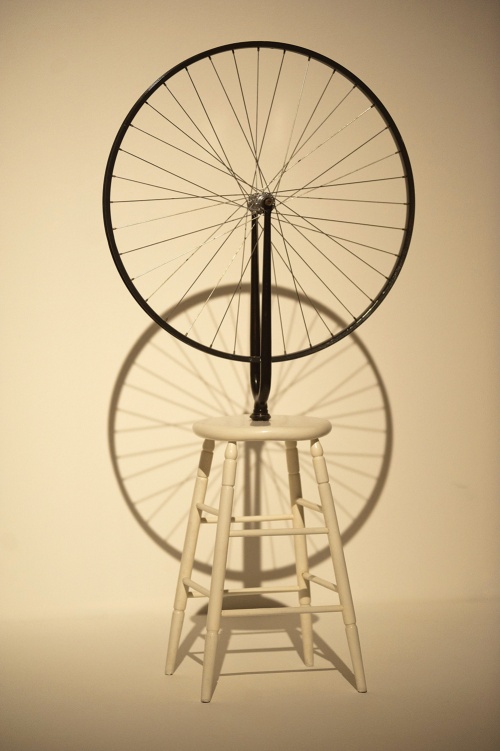
British artist Antony Gormley’s work is nothing if not controversial. His solitary figures haunting the streets and buildings of the Hong Kong cityscape are proof of that. When #legend asked Gormley what he considers the most legendary sculpture, his answer was surprising, enlightening and topical, with its likeness to various battle droids from Star Wars:
Rock Drill by Jacob Epstein (1913) was shown just once, at a group show in the United States in 1915. It was dismantled the following year – one of the reasons it is still so potent – and the work has been barely exposed in its original form. It has become a mythical piece. Why is Rock Drill so important? Why do I continually insist on Epstein’s importance in spite of his total obscurity and the distaste with which many people view him? As far as I’m concerned, he was the most radical sculptor working at the beginning of the 20th century. He was responsible for the arrival of a combination of modernism and direct carving in Britain. He was an especially important influence on the early careers of Henry Moore, Eric Gill and Henri Gaudier-Brzeska. Epstein grew up in Paris and knew Modigliani and Brancusi.
For people like Epstein, with searching minds and restless spirits, the arrival in Paris of works from the French colonies and the East had already nurtured an obsession with Japonisme. Manet, Zola and others were fascinated by the graphic clarity and the potency of colour in Japanese woodblock prints. This was followed by a wave of work from West Africa that began to arrive in private collections, the Louvre, the Musée de l’Homme and the Trocadero, offering alternative ways of thinking about the body in art.
Epstein had a natural inclination to look at big subjects: fertility, death, the power of nature and the vulnerability of the human being in the face of an overarching natural order. When he came to England in 1909, having been in Paris for three years, he brought with him the excitement of non-European traditions in carving. With African and Oceanic influences came a mixture of celebration and dread. In Rock Drill he managed to connect the evolution of the consciousness of Western art and its formal concerns.
At exactly the same date as Duchamp’s famous Bicycle Wheel (1913), Epstein, too, engaged with the ready made, in the form of an industrial product. His choice was a rock drill produced by a Chicago company for drilling high quartzite granite in which precious minerals might be found. The drill produced a massive pressure of 141 kilograms per square centimetre in penetrating the earth. You can see the way Epstein was thinking as soon as you see the extended phallic tip and hydraulic pneumatic chambers that connect the probe with the top of the tripod. The legs of the tripod have muscle-like protuberances. The translation of the latest aggressive industrial technology into a potent symbol of masculinity was then, by implication, designed to make you think about the mythological Gaia and the notion of the earth as a female, penetrable object.

Rock Drill is about sexuality, procreation, continuity, the fear of continuity being cut short by death and about the forces working against life’s potential. The conflation of industry and sexuality made Rock Drill totemic. It was a magic object that provided a warning about technology as an extension of anatomy, as an amplification of human potential that carries within it a destructive and potentially catastrophic force.
Living now, at the beginning of another era, the prophetic aspect of Rock Drill is critical. I could look at Duchamp and think his was the work of an intellectual dilettante. Duchamp is seen as the father of conceptual art. His was a simple gesture, taking two fragments of daily life – a wheel and a table – and making a hybrid.
Epstein’s work is extremely abstract. He likes to spin the wheel. In Duchamp, I don’t get the same reading of human history or engagement with future fear and dystopia that I get with Epstein. It’s like it came straight out of Mary Shelley. It’s the body reconsidered as a machine. It’s a deep fear within urban consciousness. The evolution of the built environment and the making of that world meant Epstein’s figure represented the changed status of man at a critical time in European history. It’s about the terrifying interface of war, now with machine guns and artillery capable of firing a single projectile 11 kilometres. It’s about colonisation, possession and exploitation; future life as an abstract.
It’s about the hideous deformity that comes to the unborn as a result of engaging in mechanical warfare. With Epstein, we have a political message or notion about how art can deal with very big transformations of the social framework.
People always questioned Epstein’s motives and taste, which was an indictment of British attitudes of the time. London was suspicious of Epstein’s interest in sex and death. People could not cope with overt, sexualised nudity and with what they saw as an unhealthy fascination with primitive forms of expression. The certainty of the British Empire rested on a belief that the continuity of Western civilisation depended on the example set by Periclean Athens, and that nothing good came from anywhere else. Epstein was single-minded in confronting that idea.
Rock Drill remains the foundation stone of a way of thinking about the potential of sculpture that is rich, responsive and has the most extraordinary implications. I still can’t believe people know it so little.
As told to Stephen Short.





